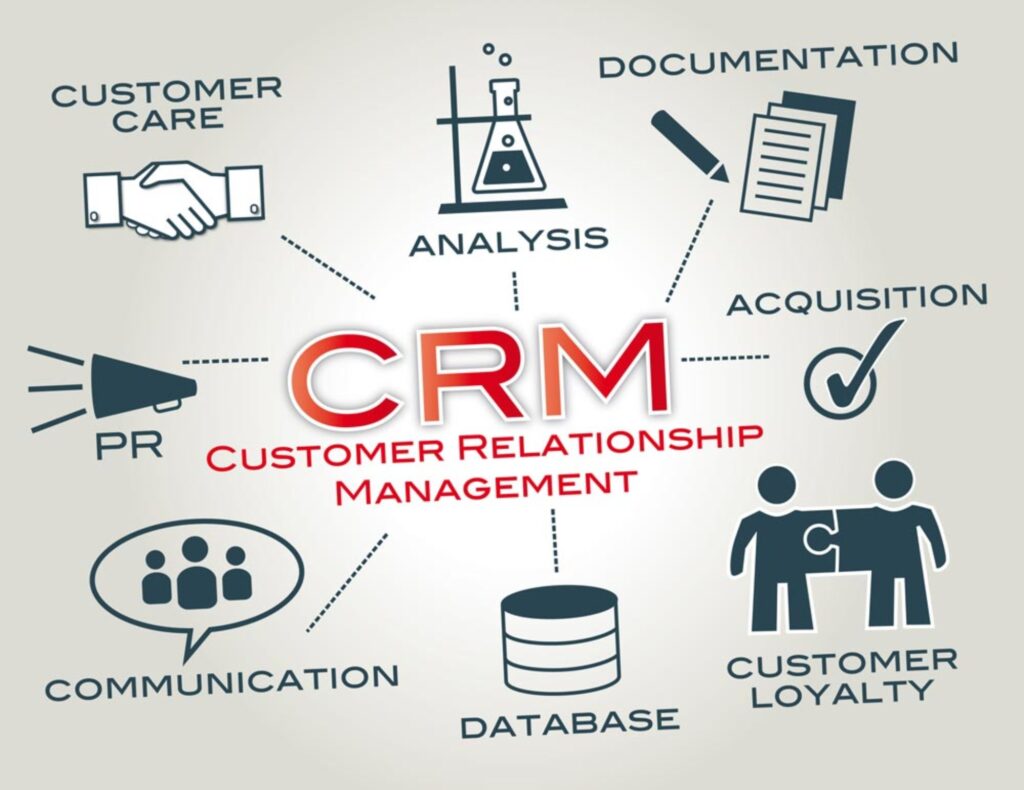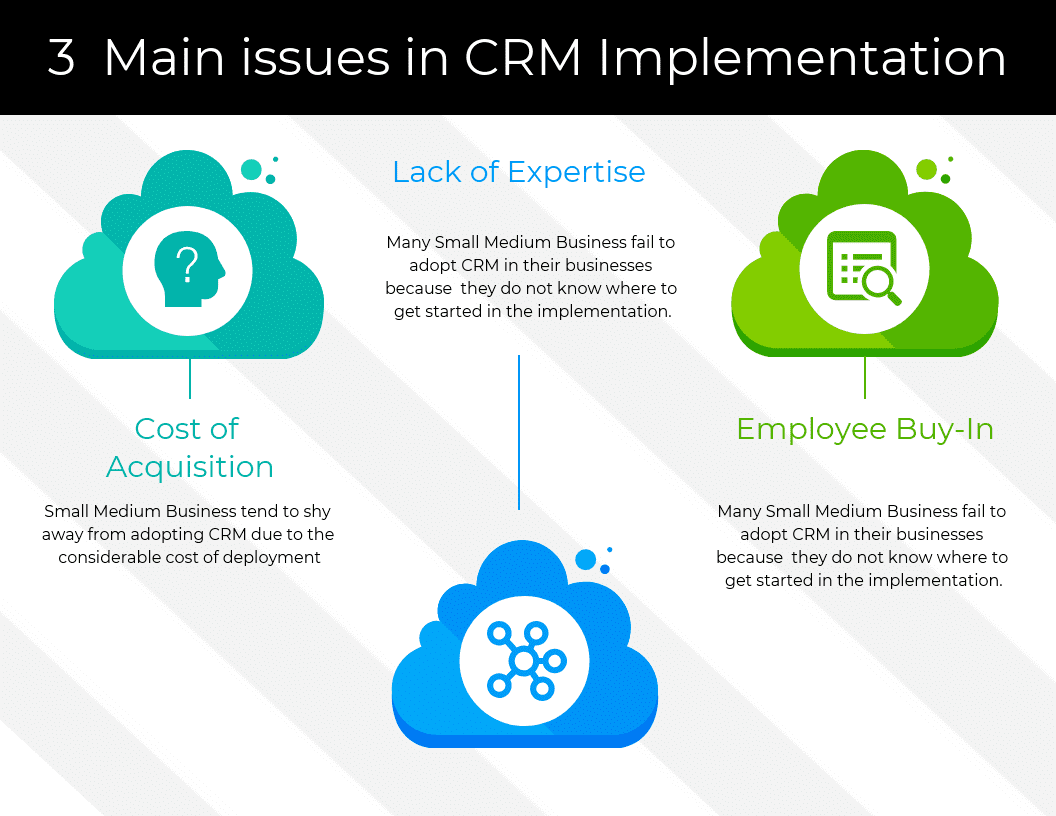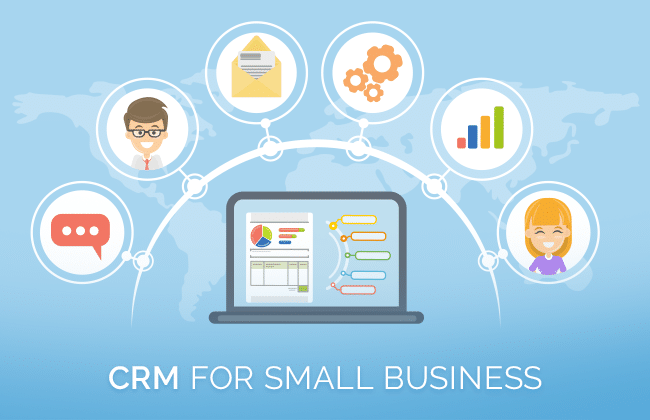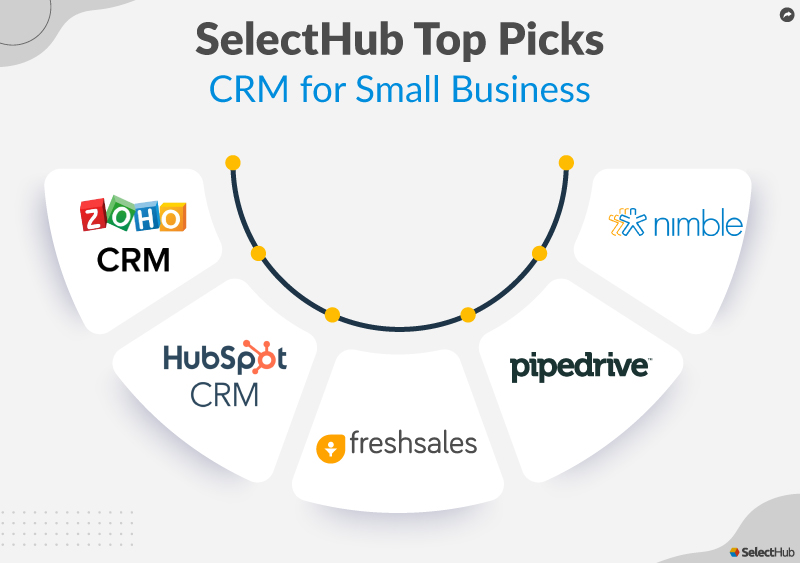
Running a small business is like juggling flaming torches while riding a unicycle. You’re constantly wearing multiple hats, from sales and marketing to customer service and operations. It’s exhilarating, challenging, and let’s be honest, sometimes a little overwhelming. That’s where Customer Relationship Management (CRM) systems come in, offering a lifeline of organization and efficiency. But beyond just organizing contacts, a CRM can be a powerful tool for automation, freeing up your time and resources to focus on what truly matters: growing your business.
What is CRM Automation?
At its core, CRM automation involves using a CRM system to streamline and automate repetitive tasks related to customer interactions. Think of it as having a tireless virtual assistant working behind the scenes, handling everything from sending welcome emails to scheduling follow-up calls. This automation is achieved through a combination of features, including:
- Workflow Automation: Setting up automated sequences based on specific triggers, such as a new lead filling out a form or a customer making a purchase.
- Email Marketing Automation: Creating and sending targeted email campaigns based on customer behavior and preferences.
- Lead Scoring: Automatically ranking leads based on their engagement and likelihood to convert.
- Task Management: Automating the assignment and tracking of tasks related to sales, customer service, and other key processes.
- Reporting and Analytics: Providing real-time insights into key performance indicators (KPIs) and helping you make data-driven decisions.
Why CRM Automation is a Game Changer for Small Businesses
Small businesses often operate with limited resources. Every minute counts, and every dollar needs to be spent wisely. CRM automation directly addresses these challenges by providing several key benefits:
1. Saves Time and Boosts Productivity
One of the most significant advantages of CRM automation is the time it saves. By automating routine tasks, you and your team can reclaim valuable hours that would otherwise be spent on manual processes. Instead of manually entering data, sending emails, and scheduling appointments, your team can focus on more strategic initiatives like building relationships with customers, closing deals, and developing new products or services. This increased efficiency leads to higher productivity and allows you to accomplish more with the same resources.
2. Improves Customer Experience
Happy customers are the lifeblood of any business. CRM automation helps you deliver exceptional customer experiences by providing personalized interactions at every touchpoint. Automated email campaigns can welcome new customers, nurture leads, and provide timely updates. Automated workflows can ensure that customer inquiries are routed to the right person and resolved quickly. By personalizing the customer journey, you can build stronger relationships, increase customer loyalty, and ultimately, drive sales.
3. Increases Sales and Revenue
CRM automation can significantly boost your sales and revenue by helping you nurture leads, close deals faster, and identify upselling and cross-selling opportunities. Automated lead scoring identifies the most promising leads, allowing your sales team to prioritize their efforts. Automated follow-up sequences ensure that leads stay engaged and informed, increasing the likelihood of conversion. By streamlining the sales process, you can close more deals and generate more revenue without increasing your sales team’s workload.
4. Reduces Errors and Improves Data Accuracy
Manual data entry is prone to errors. CRM automation eliminates the need for manual data entry, reducing the risk of mistakes and improving data accuracy. Automated workflows ensure that data is consistently updated and synchronized across all systems. Accurate data is essential for making informed decisions, tracking performance, and providing personalized customer experiences. With CRM automation, you can trust that your data is reliable and up-to-date.
5. Provides Better Insights and Reporting
CRM systems provide valuable insights into your sales, marketing, and customer service activities. CRM automation enhances these insights by automatically tracking key performance indicators (KPIs) and generating reports. You can track the performance of your sales team, the effectiveness of your marketing campaigns, and the level of customer satisfaction. These insights allow you to identify areas for improvement and make data-driven decisions that drive growth.
Key Features to Look for in a CRM for Small Business Automation
Choosing the right CRM for your small business is crucial. Here are some key features to look for when evaluating different CRM solutions:
1. Contact Management
This is the foundation of any CRM system. It allows you to store and organize all your customer data in one central location. Look for features like:
- Contact Profiles: Detailed profiles with contact information, communication history, and relevant notes.
- Segmentation: The ability to group contacts based on various criteria (e.g., demographics, purchase history, lead source).
- Import/Export: Easy import and export of contact data from other systems.
2. Sales Automation
Sales automation features streamline the sales process and help your team close deals faster. Look for:
- Lead Management: Tracking leads from initial contact to conversion.
- Deal Tracking: Monitoring the progress of deals through the sales pipeline.
- Workflow Automation: Automating tasks like sending follow-up emails and scheduling appointments.
- Sales Reporting: Analyzing sales performance and identifying areas for improvement.
3. Marketing Automation
Marketing automation features help you nurture leads, engage customers, and drive sales. Look for:
- Email Marketing: Creating and sending targeted email campaigns.
- Landing Pages: Building custom landing pages to capture leads.
- Lead Scoring: Automatically ranking leads based on their engagement.
- Social Media Integration: Managing social media campaigns and tracking engagement.
4. Customer Service Automation
Customer service automation features improve customer satisfaction and reduce response times. Look for:
- Help Desk Integration: Integrating with a help desk system to manage customer inquiries.
- Knowledge Base: Creating a knowledge base to provide customers with self-service support.
- Live Chat: Providing real-time support through live chat.
- Ticket Management: Tracking and resolving customer issues efficiently.
5. Reporting and Analytics
Reporting and analytics features provide insights into your sales, marketing, and customer service activities. Look for:
- Customizable Dashboards: Creating dashboards to track key performance indicators (KPIs).
- Pre-built Reports: Accessing pre-built reports on sales, marketing, and customer service performance.
- Data Visualization: Using charts and graphs to visualize data.
- Integration with other tools: Integration with tools for data analysis.
6. Integrations
A CRM system should integrate with other tools you use, such as:
- Email Marketing Platforms: Mailchimp, Constant Contact, etc.
- Accounting Software: QuickBooks, Xero, etc.
- Social Media Platforms: Facebook, Twitter, LinkedIn, etc.
- E-commerce Platforms: Shopify, WooCommerce, etc.
7. Mobile Accessibility
With the rise of remote work and mobile devices, it’s essential to have a CRM that is accessible on the go. Look for a CRM with a mobile app or a responsive web design that allows you to access your data and manage your business from anywhere.
Choosing the Right CRM for Your Small Business: A Step-by-Step Guide
Selecting the right CRM solution can feel like navigating a maze. Here’s a step-by-step guide to help you find the perfect fit:
1. Define Your Needs and Goals
Before you start evaluating CRM systems, take some time to define your specific needs and goals. What are your biggest pain points? What do you want to achieve with a CRM? Consider the following:
- Sales Process: How do you currently manage your sales process? What are the bottlenecks?
- Marketing Strategy: What marketing channels do you use? How do you nurture leads?
- Customer Service: How do you handle customer inquiries and support requests?
- Team Size: How many users will be using the CRM?
- Budget: How much are you willing to spend on a CRM?
Answering these questions will help you create a list of must-have features and prioritize your needs.
2. Research CRM Options
Once you have a clear understanding of your needs, start researching different CRM options. There are many CRM providers available, each with its own strengths and weaknesses. Some popular options for small businesses include:
- HubSpot CRM: A free CRM with powerful features for sales and marketing automation.
- Zoho CRM: A comprehensive CRM with a wide range of features and integrations.
- Pipedrive: A sales-focused CRM with a user-friendly interface.
- Salesforce Sales Cloud: A robust CRM with a wide range of features, suitable for larger businesses. (Can be expensive for small businesses)
- Freshsales: A sales-focused CRM with built-in phone and email features.
- Keap (formerly Infusionsoft): A CRM with advanced marketing automation features.
Read reviews, compare features, and consider the pricing plans of each option. Look for CRM systems that offer free trials or demos so you can test them out before committing.
3. Evaluate and Compare
Create a spreadsheet or use a comparison tool to evaluate the CRM options you’re considering. Compare them based on the following criteria:
- Features: Does the CRM offer the features you need?
- Ease of Use: Is the CRM easy to use and navigate?
- Integrations: Does the CRM integrate with the other tools you use?
- Pricing: Is the pricing plan affordable for your budget?
- Customer Support: Does the provider offer good customer support?
- Scalability: Can the CRM scale as your business grows?
Prioritize the features that are most important to your business and eliminate options that don’t meet your needs.
4. Test and Demo
Once you’ve narrowed down your options, take advantage of free trials or demos to test the CRM systems. This is your chance to:
- Explore the interface: See how user-friendly the system is.
- Test the features: Try out the features that are most important to you.
- Import your data: See how easy it is to import your existing data.
- Get feedback from your team: Ask your team to test the CRM and provide feedback.
The testing phase will help you determine which CRM is the best fit for your business.
5. Choose and Implement
After testing the different CRM options, you can make your decision. Choose the CRM that best meets your needs and budget. Once you’ve selected a CRM, it’s time to implement it. This involves:
- Data Migration: Importing your existing data into the CRM.
- Customization: Customizing the CRM to meet your specific needs.
- Training: Training your team on how to use the CRM.
- Integration: Integrating the CRM with your other tools.
- Ongoing Support: Providing ongoing support and maintenance.
Implementation can be time-consuming, so be prepared to invest the necessary time and resources. Consider hiring a consultant or working with the CRM provider to ensure a smooth implementation process.
Best Practices for CRM Automation in Small Businesses
Implementing a CRM is just the first step. To get the most out of your CRM automation efforts, follow these best practices:
1. Start Small and Scale Gradually
Don’t try to automate everything at once. Start with a few key processes and gradually expand your automation efforts as you become more comfortable with the system. This will help you avoid overwhelm and ensure a smooth transition.
2. Focus on the Customer Journey
Think about the entire customer journey, from the first point of contact to the final purchase. Identify the touchpoints where you can automate processes to improve the customer experience. Map out your customer journey and identify opportunities for automation at each stage.
3. Personalize Your Interactions
Automation doesn’t mean impersonal. Use personalization features to tailor your communications to each customer. Use their name, refer to their past purchases, and offer relevant content based on their interests. Personalization makes customers feel valued and increases engagement.
4. Segment Your Audience
Divide your audience into segments based on their demographics, behavior, and preferences. This allows you to send targeted messages that are more likely to resonate with each segment. Segmenting your audience ensures that your marketing efforts are relevant and effective.
5. Use Triggers and Workflows Wisely
Set up triggers and workflows to automate tasks based on specific actions or events. For example, you can trigger an email when a lead fills out a form or a customer makes a purchase. Use workflows to automate tasks like sending follow-up emails, scheduling appointments, and assigning tasks to team members. Be careful not to over-automate. Ensure that your workflows add value and don’t feel robotic.
6. Monitor and Optimize
Regularly monitor the performance of your automated processes and make adjustments as needed. Track key metrics like open rates, click-through rates, and conversion rates. Use these metrics to identify areas for improvement and optimize your automation efforts. Continuously evaluate and refine your approach to ensure that you’re getting the most out of your CRM.
7. Train Your Team
Ensure that your team is properly trained on how to use the CRM and its automation features. Provide ongoing training and support to help them get the most out of the system. This will ensure that your team is using the CRM effectively and that they are able to leverage its full potential.
8. Integrate with Other Tools
Integrate your CRM with other tools you use, such as your email marketing platform, accounting software, and social media platforms. This will help you streamline your workflows and improve data accuracy. Integrations allow you to share data between different systems and automate tasks across multiple platforms.
9. Protect Your Data
Implement security measures to protect your customer data. Use strong passwords, enable two-factor authentication, and regularly back up your data. Ensure that your CRM provider has robust security measures in place to protect your data from unauthorized access.
10. Review and Adapt
The business landscape is constantly evolving. Regularly review your CRM automation strategy and adapt it to meet the changing needs of your business. Stay up-to-date on the latest CRM features and best practices. Be prepared to make changes to your processes as your business grows and evolves. CRM is a journey, not a destination.
Common CRM Automation Mistakes to Avoid
While CRM automation offers numerous benefits, it’s easy to make mistakes that can hinder your efforts. Here are some common pitfalls to avoid:
1. Over-Automating
Don’t automate every single task. Over-automation can lead to impersonal interactions and a poor customer experience. Focus on automating tasks that are repetitive, time-consuming, and prone to errors. Leave room for human interaction, especially when dealing with complex issues or building relationships.
2. Ignoring Data Quality
CRM automation relies on accurate data. If your data is inaccurate or incomplete, your automation efforts will be ineffective. Regularly clean and update your data to ensure that it’s accurate and reliable. Implement data validation rules to prevent errors from entering the system.
3. Failing to Personalize
Generic, one-size-fits-all communications are ineffective. Personalize your interactions to make customers feel valued. Use their name, refer to their past purchases, and offer relevant content based on their interests. Personalization is key to building relationships and driving engagement.
4. Setting and Forgetting
CRM automation is not a set-it-and-forget-it solution. Regularly monitor the performance of your automated processes and make adjustments as needed. Track key metrics and use the data to optimize your efforts. Continuously review and refine your approach to ensure that you’re getting the most out of your CRM.
5. Not Training Your Team
Your team needs to be properly trained on how to use the CRM and its automation features. Without proper training, they won’t be able to leverage the full potential of the system. Provide ongoing training and support to help them get the most out of the CRM. Invest in your team’s knowledge and skills to ensure success.
6. Choosing the Wrong CRM
Not all CRM systems are created equal. Choosing the wrong CRM can lead to frustration and wasted resources. Take the time to research different options and choose the CRM that best meets your needs and budget. Consider your specific requirements and the features that are most important to your business. Don’t choose a CRM based on price alone.
7. Neglecting Integrations
Failing to integrate your CRM with other tools can hinder your workflows and limit the effectiveness of your automation efforts. Integrate your CRM with your email marketing platform, accounting software, and social media platforms to streamline your processes and improve data accuracy. Integrations are essential for creating a seamless and efficient workflow.
8. Poorly Designed Workflows
Poorly designed workflows can be confusing and ineffective. Design your workflows carefully, ensuring that they are logical and easy to follow. Test your workflows thoroughly before implementing them. Avoid creating overly complex workflows that are difficult to manage.
9. Not Analyzing Results
Without analyzing results, you won’t know if your automation efforts are working. Track key metrics and use the data to measure the effectiveness of your automation processes. Analyze the data to identify areas for improvement and optimize your efforts. Data-driven decision-making is essential for success.
10. Not Keeping Up with Updates
CRM systems are constantly evolving. Stay up-to-date on the latest features and updates. Regularly review your CRM and make sure you’re using the latest version. Take advantage of new features and improvements to enhance your automation efforts. Keep an eye on the future and adapt your approach accordingly.
The Future of CRM Automation for Small Businesses
The future of CRM automation is bright, with exciting advancements on the horizon. Here are some trends to watch:
1. Artificial Intelligence (AI) and Machine Learning (ML)
AI and ML are already playing a significant role in CRM automation, and their influence will only grow. Expect to see more AI-powered features, such as:
- Predictive Analytics: Predicting customer behavior and identifying potential opportunities.
- Chatbots: Providing automated customer support and answering common questions.
- Personalized Recommendations: Offering personalized product recommendations and content suggestions.
- Automated Data Entry: Automatically extracting data from emails and other sources.
AI and ML will enable businesses to automate more complex tasks and gain deeper insights into their customers.
2. Hyper-Personalization
Customers are demanding more personalized experiences. CRM automation will enable businesses to deliver hyper-personalized interactions by:
- Using Real-time Data: Tracking customer behavior and preferences in real-time.
- Creating Dynamic Content: Delivering personalized content based on customer data.
- Offering Personalized Recommendations: Providing highly relevant product recommendations and content suggestions.
Hyper-personalization will become essential for building strong customer relationships and driving loyalty.
3. Increased Integration
Expect to see even more seamless integrations between CRM systems and other business tools. This will:
- Streamline Workflows: Automating tasks across multiple platforms.
- Improve Data Accuracy: Ensuring data is synchronized across all systems.
- Enhance Reporting: Providing a holistic view of your business performance.
Increased integration will make it easier to manage your business operations and make data-driven decisions.
4. Mobile-First Approach
With the rise of mobile devices, CRM systems will become even more mobile-friendly. Expect to see:
- Mobile Apps: Providing access to CRM data and features on the go.
- Responsive Design: Ensuring that CRM systems are accessible on any device.
- Location-Based Services: Using location data to personalize customer interactions.
A mobile-first approach will enable businesses to stay connected with their customers and manage their operations from anywhere.
5. Focus on Customer Experience
The customer experience will continue to be a top priority. CRM automation will be used to:
- Provide Proactive Support: Anticipating customer needs and offering proactive support.
- Personalize Interactions: Delivering personalized experiences at every touchpoint.
- Gather Customer Feedback: Collecting customer feedback to improve products and services.
CRM automation will be essential for creating exceptional customer experiences and building lasting relationships.
Conclusion: Embracing the Power of CRM Automation
CRM automation is no longer a luxury; it’s a necessity for small businesses that want to thrive in today’s competitive landscape. By automating repetitive tasks, streamlining workflows, and personalizing customer interactions, you can save time, increase productivity, improve customer experience, and drive sales. Choosing the right CRM, implementing best practices, and staying up-to-date on the latest trends will empower your small business to achieve its full potential. Don’t get left behind. Embrace the power of CRM automation and watch your business soar!


